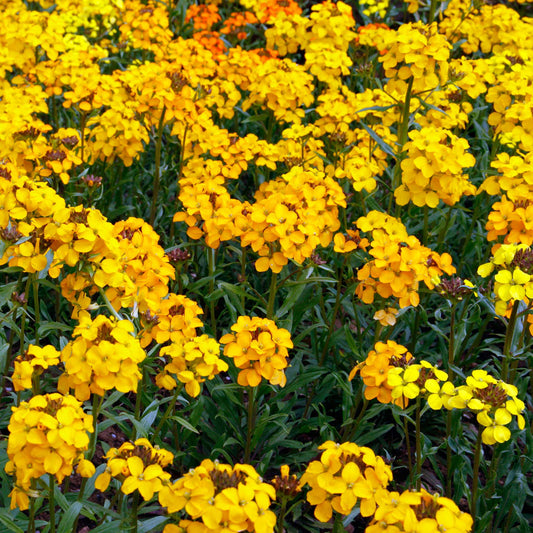-
main-collection-product-grid

English Wallflower Seeds
Adaptable and easy to grow, these nectar-rich flowers draw pollinatorsEnglish Wallflower Seeds
Adaptable and easy to grow, these nectar-rich flowers draw pollinatorsRegular price As Low As $4.99Regular priceUnit price per -
main-collection-product-grid

Siberian Wallflower Seeds
Early blooming, vibrant orange flowers make for a striking wildflower meadowSiberian Wallflower Seeds
Early blooming, vibrant orange flowers make for a striking wildflower meadowRegular price As Low As $4.99Regular priceUnit price per -
main-collection-product-grid

Wallflower Seeds - Fair Lady Mix
Plant these biennial seeds in fall for a rustic rainbow of faded bloomsWallflower Seeds - Fair Lady Mix
Plant these biennial seeds in fall for a rustic rainbow of faded bloomsRegular price As Low As $4.99Regular priceUnit price per -
main-collection-product-grid

Wallflower Seeds - Passion Mix
Scarlet and violet blooms provide vibrant cool season colorWallflower Seeds - Passion Mix
Scarlet and violet blooms provide vibrant cool season colorRegular price As Low As $5.49Regular priceUnit price per
Growing wallflower seeds in your garden
- Vivid clusters of red, pink, violet, and orange
- Thrives in full sun or partially shaded areas
- Fragrant pollinator attractor with early-season spring blooms
- Drought tolerant and perfect for container gardens
why we love wallflower seeds
While a person referred to as a wallflower might be seen as shy and retiring, the flower of the same name is anything but. Showy and brilliantly colored, these 12 to 18 inch tall biennials will be the center of attention in any spring garden. Anyone can plant and maintain these cheery little blooms, because—perhaps unsurprisingly for a plant that earned its title by clinging to cracks and crevices in stone—wallflower is not difficult to grow. The only thing that might surprise you about this flower is to find out that, like cauliflower, cabbage, and mustard, it's a member of the brassicaceae family. Additionally, in the Middle Ages, wallflowers were popular for festival bouquets.
when and how to grow wallflowers
To grow wallflower seeds, direct sow them in fall or early spring and press gently down into the soil. They need light to grow and shouldn't be covered too heavily. They prefer sunny locations, and do spectacularly in rock gardens. They also grow beautifully in containers with very little work, and their old-fashioned charm makes them a strong candidate for a cottage or meadow garden. Just be sure not to overwater, as wallflower can drown. Dry soil, however, won't phase it a bit, and drought-hardy wallflower isn't going to be shut down by a little heat either. Wallflower is hardy and evergreen in USDA zones 6 through 9, and can be grown and overwintered even in colder climates. Just prune down close to the soil when the wallflower is done blooming and the weather cools off, and the plant will return again in spring for a second season. Wallflower typically blooms from April through June, attracting pollinators emerging from winter hibernation with its bright show.
friends of the wallflower
Snapdragon makes a lovely garden companion for the wallflower, sharing its bold colors and early blossoms, but tall enough to stand over the smaller wallflower. Try interspersing with alliums or tulips for a riot of early spring color that will delight anyone lucky enough to catch a glimpse. Eden Brothers' Fairlady Wallflower Seed Mix and Passion Wallflower Seed Mix can offer even more color options.
For more information about planting, growing, and caring for wallflower seed, see our Wallflower Seeds Planting Guide.



